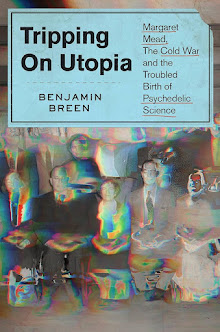 |
| Astrological talisman from an 1801 grimoire. |
 |
| Cyprien et le démon, French, 14th century. |
is also known as the Black Book, and is the textbook of the Black School at Wittenburg, the book from which a witch or sorcerer gets his spells. The Black School at Wittenburg was purportedly a place in Germany where one went to learn the black arts.I was somewhat dubious of this Harry Potter-esque claim so I researched the title a bit more and found that the attributed author, one Cyprianus, probably refers to St. Cyprian of Antioch (d. 304 CE): a very common apocryphal attribution for medieval magical texts, since Cyprian was reputed to have been a powerful magician and demon-summoner before converting to Christianity (see also the Iberian grimoire The Great Book of Saint Cyprian).
 |
| The martyrdom of Cyprian and Justina, medieval Portuguese, oil on panel. |
An interesting-seeming book by a professor of Norwegian literature named Kathleen Stokker (Remedies and Rituals: Folk Medicine in Norway and the New Land
The identity of the mysterious figure Cyprianus varied wildly. People in Holstein, Denmark, imagined Cyprianus to be a fellow Dane so evil during his lifetime that when he died the devil threw him out of Hell. This act so enraged Cyprianus that he dedicated himself to writing the nine Books of Black Arts that underlie all subsequent Scandinavian black books.Next comes a surprising twist:
In stark contrast, the Cyprianus of Oldtidens Sortebog [a Norwegian grimoire] is a ravishingly beautiful, irrestistibly seductive, prodigiously knowledgeable, pious Mexican nun. The nun's gory story, dated 1351, details her mistreatment by a debauched cleric whose advances she steadfastly refused.It goes unexplained how a Mexican nun could have even existed in 1351! Perhaps the identity of Cyprianus, and of the Wellcome manuscript attributed to him, will never be known with much certainty owing to the profusion of misinformation that seems to surround all things related to black magic. The images, however, are incredibly evocative and mysterious, and tell a fascinating story in themselves.
Cyprianus, Clavis Inferni sive magia alba et nigra approbata Metratona. German, 18th century, ink and watercolor. The archangel Metatron with allegorical objects. I have no idea what to make of this one. The text is in Kabbalistic Hebrew and cipher, with Greek alpha and omega symbols.
The final page. Note the symbol, which looks strangely like the emblem of the Society of Jesus to me. [Update 5/11] The same Anonymous in the comments section has also contributed a rough translation of this passage: "I truly, from the law of that Majesty, do receive and take the treasure requested by you in the sent proclamation. Go away now most calmly to your place, without murmor [assuming rumore instead of umore] and commotion, and without harm to us and to the circle of other men. In the name of the Father, the Son and the Holy Ghost, AMEN." Sounds like a spell or prayer to return a summoned being to its place of origin, perhaps.
These magical texts can make you feel a bit crazy if you spend too much time researching them (I was recently told as a bit of historian gossip that a prominent early researcher of John Dee went mad from precisely this cause, and I wasn't surprised). So I'll stop there.
As a side note, I'm hosting this month's early modern Carnivalesque (a round-up of recent blog posts on early modern history) so please send submissions to resobscura@gmail.com!











13 comments:
Post a Comment